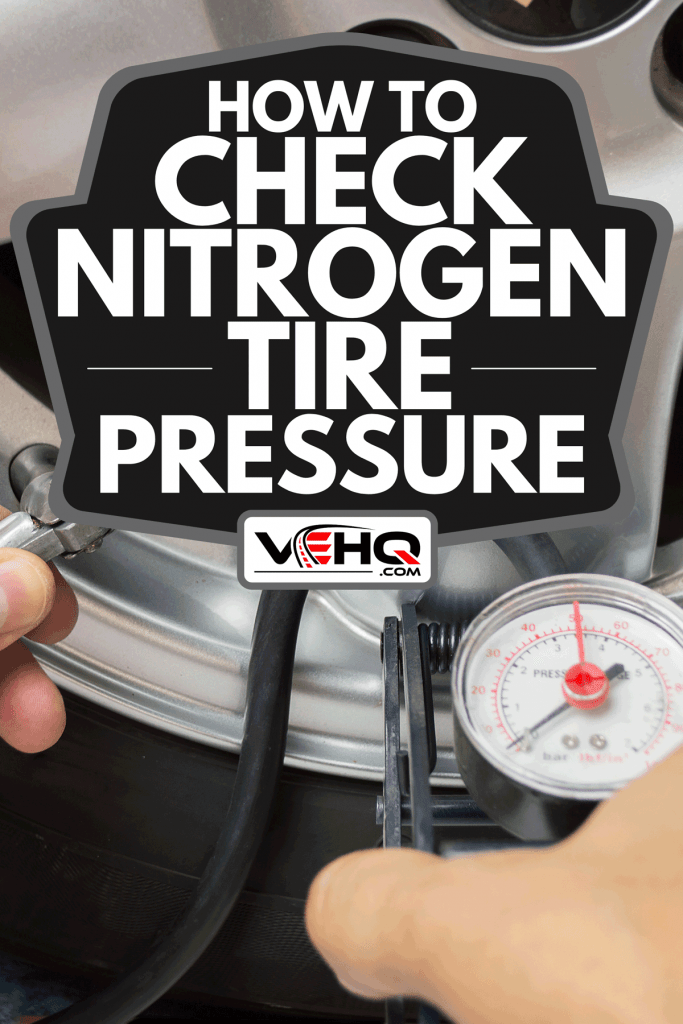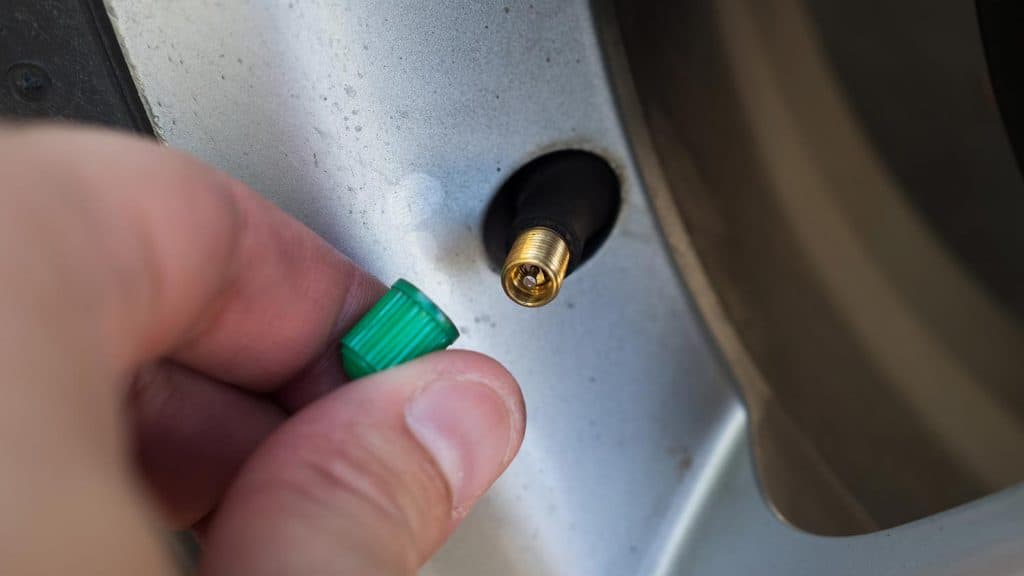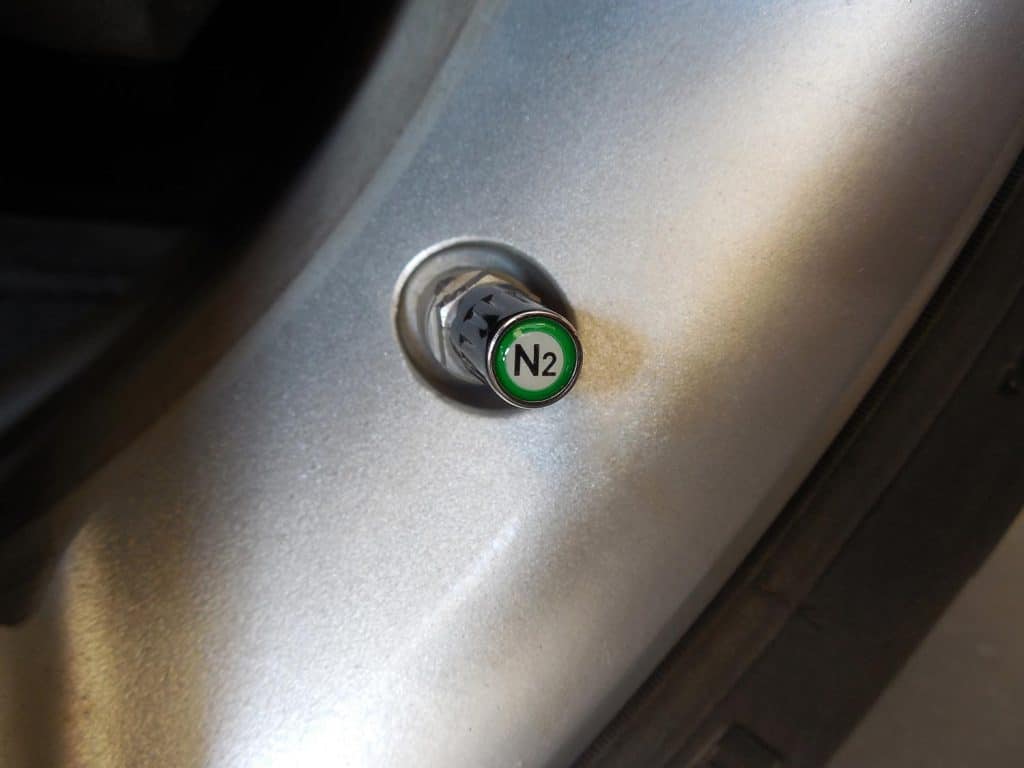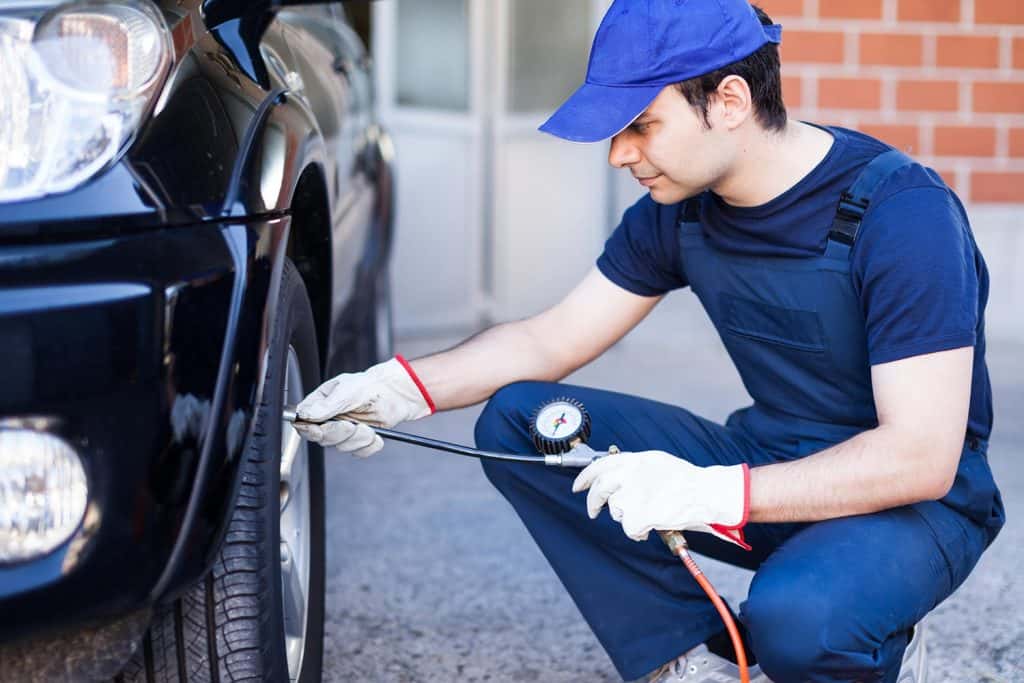Many vehicle owners are learning that filling their tires with nitrogen instead of compressed air can improve gas mileage, reduce uneven tread wear, and extend tire life. All of this is possible because nitrogen seeps out of tires more slowly than air does, so the tires remain fully inflated longer after being filled.
However, if you're using nitrogen in your tires, it's still imperative that you check them regularly and keep them inflated. So, how do you check the tire pressure in your nitrogen tires? We've done the research, and we have the answers for you!
Check the tire pressure on your nitrogen-filled tires the same way you would if they were filled with compressed air. Follow these steps:
- Determine the recommended tire pressure for your vehicle.
- Unscrew and remove the valve cap from one of the tires.
- Connect the inflow valve of your tire pressure gauge to the tire's valve stem.
- Note the current inflation of the tire.
- Disconnect the gauge from the tire's valve stem.
- If the tire pressure is low, add nitrogen.
- Replace the cap on the valve stem.
- Repeats steps 2-8 with each of the vehicle's other tires.
In the remainder of this article, we'll describe these steps in more detail. We'll also discuss how to know if a vehicle's tires are filled with nitrogen, how long you can expect a nitrogen fill to last, and whether tires filled with nitrogen will ever go flat. We will address the pros and cons of using nitrogen in your tires, and we'll tell you where you can go to get a nitrogen fillup. Keep reading to learn all about tire inflation with nitrogen!

[toc]
How To Check Nitrogen Tire Pressure
1. Determine The Recommended Tire Pressure For Your Vehicle
Consult your owner's manual for the manufacturer's recommended level of inflation for your vehicle's tires. This number will be between 33 and 36 psi (pounds per square inch).
2. Unscrew And Remove The Valve Cap From One Of The Tires

Turn the valve cap counterclockwise until it unthreads from the tire's valve stem. Lift it off the valve stem. Store it in your pocket or another safe place.
3. Connect The Inflow Valve Of Your Tire Pressure Gauge To The Tire's Valve Stem
The inflow valve is a circular protrusion, with a small metal spike at its center, located at one end of the tire pressure gauge. It fits snugly over the tire's valve stem. When you connect it to the valve stem, you will hear a sharp hiss as nitrogen flows out of the tire. However, this sound will cease as soon as the gauge and valve stem are correctly connected.
4. Note The Current Inflation Of The Tire
The three most common tire pressure gauges are the stick gauge, dial gauge, and digital gauge. Here's how you read each of them:
Stick Gauge
This simple gauge is about the size and shape of a pencil. Inside its hollow metal body is a plastic stick with gradients marked on it. When you connect the gauge to the tire's valve stem, air pressure forces the stick out the bottom of the gauge. By reading the highest visible gradient on the stick, you can determine the tire's inflation.
Click here for a stick gauge on Amazon.
Dial Gauge
Dial gauges are generally sturdier and easier to read than stick gauges. The dial and needle are protected by a transparent cover of glass or hard plastic. When you connect the inflow valve to the tire's valve stem, the needle moves until its point hovers over the mark, denoting the tire's inflation.
Click here for a dial gauge on Amazon.
Digital Gauge
The digital gauge is the most accurate of the three types. Connect it to the tire's valve stem and get a digital readout of the tire's inflation. Digital gauges typically include illuminated screens, so they're easy to use even at night. On the other hand, they require batteries, which can wear out over time.
Click here for a digital gauge on Amazon.
5. Disconnect The Gauge From The Tire's Valve Stem
Once you've read the tire pressure, disconnect the gauge by pulling it off the valve stem. You may hear a very short hiss of air escaping as the gauge and valve disengage.
6. If The Tire Pressure Is Low, Add Nitrogen
If the tire's pressure is more than 1.0 psi lower than recommended, top it off with more nitrogen. You can take your vehicle to a professional or do this at home. To top off your tires at home, you will need a tank of nitrogen, a digital tire inflator, and a portable nitrogen analyzer. Follow these steps:
- Connect the digital tire inflator's hose to the outflow valve of the nitrogen tank.
- Connect the inflator's nozzle to the tire's valve stem.
- Open the nitrogen tank's outflow valve and let nitrogen flow into the tire. Watch the inflator's tire pressure readout carefully, so you don't overinflate the tire.
- When the tire is inflated to the recommended psi, turn off the nitrogen tank.
- Disconnect the inflator from the tire and the nitrogen tank.
- Connect the nozzle of your portable nitrogen analyzer to the tire's valve stem. The readout should show a nitrogen level of 96% or higher.
- Disconnect the portable nitrogen analyzer from the tire's valve stem.
7. Replace The Cap On The Valve Stem
Once you have inflated the tire to the recommended psi, replace the cap on the valve stem by turning it clockwise until it is firmly threaded shut.
8. Repeat Steps 2-7 With Each Of The Vehicle's Other Tires
Repeat this process with your vehicle's remaining three tires.
Click here for a digital tire inflator on Amazon.
How Can You Tell If A Tire Is Inflated With Nitrogen?
There's no way to tell, simply by looking at a tire, whether it's inflated with nitrogen or air. You could connect a portable nitrogen analyzer to the tire and determine what percentage of the gas inside the tire is nitrogen.
An air-filled tire will read about 78% nitrogen, while a reading of 95% or more means that the tire is inflated with nitrogen. A reading between 80% and 95% indicates a mix of nitrogen and air.
Using a nitrogen analyzer in this way, however, is a cumbersome task. There is a much simpler way to show that a tire is filled with nitrogen. You can replace the original valve stem cap with a green N2 (signifying nitrogen) button on its top. Most tire dealers use this method to identify nitrogen-filled tires, and the practice is catching on with many vehicle owners, as well.
Click here for N2 tire valve caps on Amazon.
How Long Does Nitrogen Last In Car Tires?
Tires appear to be solid and impermeable, but they are composed of long strands of rubber that expand and contract as the tire moves. This allows air molecules to seep out slowly, causing the tire to deflate at a rate of about 1.5 psi per month.
Because nitrogen molecules are larger than air molecules, they do not seep out as quickly. Nitrogen's diffusion rate is estimated to be 1/3 to 2/3 as great as that of normal air. So, nitrogen-filled tires lose inflation at a rate of about 0.5 to 1.0 psi per month.
Do Nitrogen Tires Go Flat?
Although nitrogen-filled tires lose inflation more slowly, they will eventually go flat. Many owners don't check their nitrogen tires between oil changes, believing they will remain sufficiently inflated. However, in the three or four months between oil changes, even nitrogen-filled tires will lose 1.5 to 4.0 psi, enough to cause uneven tread wear, lower gas mileage, and tire damage.
Click here for a nitrogen window sticker on Amazon.
What Are The Disadvantages Of Nitrogen?
Proponents of nitrogen cite two major advantages:
- Nitrogen-filled tires remain fully inflated longer than air-filled ones. This contributes to better gas mileage, easier handling, and more uniform tire wear.
- Because nitrogen does not introduce water into the tire (as compressed air does), it does not promote corrosion of its steel components (belts, beads, sidewalls).
Detractors, on the other hand, argue that there are two overriding disadvantages to using nitrogen:
- It is difficult to find local sources where you can have your tires inflated and topped off. Compressed air is much more readily available than nitrogen.
- Nitrogen fills can be very pricey. Some dealers charge $5 or more per tire. You can reduce the cost by filling your tires at home, but this requires preparation and coordination and is still more expensive than using compressed air.
Where Can I Get Nitrogen To Inflate My Tires?
Nitrogen for tires is not readily available, especially if you are traveling and don't know a local source. Few gas stations offer it.
Some automobile dealerships and tire stores provide nitrogen fills, usually for $5 or more per tire. Costco's discount retail store sells new nitrogen-filled tires and offers nitrogen fills for free, although you generally have to drop in and wait until a mechanic is available.
Does Walmart Use Nitrogen To Inflate Tires?
Currently, Walmart does not offer nitrogen tire inflation. However, as the popularity of nitrogen tires increases, it is likely that Walmart and other major discount retailers will begin offering this service.
Click here for nitrogen tank on Amazon.
In Closing
Now that you know how to check your nitrogen-filled tires make sure you do it every month. Remember: although nitrogen tires lose inflation more slowly than air-filled tires, they still deflate over time. If you let them go too long, you'll miss out on all the benefits that nitrogen offers!
You may also enjoy:









